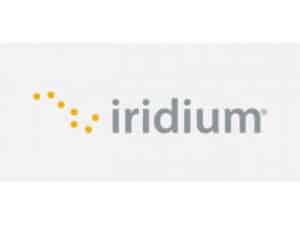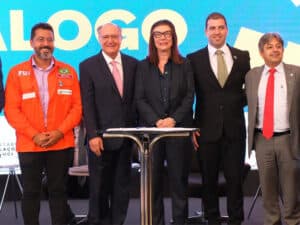
First LNG fueled product tanker enters service
Written by Marking a major breakthrough for commercial shipping and LNG fuel technology, the product tanker Bit Viking returned to service along the Norwegian coast as the first vessel to undergo conversion from heavy fuel oil to dual fuel operation. The conversion makes the ship one of the most environmentally friendly tankers in the world and the largest non-LNG carrier merchant ship to operate on LNG.
Marking a major breakthrough for commercial shipping and LNG fuel technology, the product tanker Bit Viking returned to service along the Norwegian coast as the first vessel to undergo conversion from heavy fuel oil to dual fuel operation. The conversion makes the ship one of the most environmentally friendly tankers in the world and the largest non-LNG carrier merchant ship to operate on LNG.
The project started back in August 2010, when Wärtsilä announced that it had signed a turnkey project with Sweden’s Tarbit Shipping to convert the Bit Viking to LNG operation. Under the conversion, Wärtsilä supplied deck-mounted gas fuel systems, piping, two six-cylinder Wärtsilä 46 engines converted to Wärtsilä 50DF units with related control systems and all adjustments to the ship’s systems.
Furthermore, the tanker’s classification certificate was also updated. The engines are connected directly to the propeller shafts through a reduction gearbox, thus avoiding the electrical losses that are an unavoidable feature of diesel-electric configurations. This enables a significant improvement in propulsion efficiency, reduced fuel consumption, and corresponding reductions in emissions.
The Bit Viking is also the first LNG fuelled vessel to be classified by Germanischer Lloyd. GL played a critical role in the conversion by ensuring that all the components manufactured and installed in the system—the piping, valves, safety equipment, and the tanks themselves—were all safely constructed, using the right type of materials and right type of welding.
TECHNICAL CHALLENGES
The technical challenge in the conversion process was immense, says Ronnie-Torsten Westerman, Business Development Manager at GL. As a world first, the project required special attention on how to interpret the relevant class rules and how the flag administration would understand and accept the risk analysis. Says Westerman, “Special attention was given to the bunkering process and how it should be performed, since this is a critical operation and requires special expertise and equipment.”
The conversion of the Bit Viking was also a good opportunity to evaluate whether GL’s own rules for gas as ship fuel would prove up to the task. “The existing rules are sufficient to cover such a conversion, as the Bit Viking underwent,” says Westerman.
After the Bit Viking was handed over to Tarbit Shipping, it went into service for Statoil along the Norwegian coastline. The conversion will enable the ship to qualify for lower NOX emission taxes under the Norwegian NOX fund scheme. The fund is a cooperative effort whereby participating companies may apply for financial support in return for introducing NOX reducing measures. Furthermore, LNG operation means lower carbon oxide emissions, and virtually no SOx or particle emissions.
Delivered in 2007 by China’s Shanghai Edwards shipyard, the Bit Viking is built with double engine rooms, propellers, steering gears, rudders and control systems. This is the first marine installation in the world to involve converting Wärtsilä 46 engines to Wärtsilä 50DF engines, and the first 50DF marine installation with mechanical propulsion.
The Bit Viking uses Wärtsilä’s new LNGPac system, which enables the safe and convenient onboard storage of LNG. The two 500 cubic meter LNG storage tanks are mounted on the deck to facilitate bunkering operations and permit the bunkering of LNG at a rate of 430 cubic meters per hour. The storage tanks provide the vessel with 12 days of autonomous operation at 80% load, with the option to switch to marine gas oil if an extended range is required. When visiting EU ports, which have a 0.1 per cent limit on sulfur emissions, the vessel operates on gas.
 “Wärtsilä’s unique expertise and experience with dual fuel technology, as well as with fuel conversion projects, were the main reasons for us choosing them. We appreciate the technological efficiency of the Wärtsilä solutions and the expert way in which this conversion project has been handled. We are proud that the Bit Viking is now one of the world’s most environmentally sustainable tankers in operation,” says Anders Hermansson, Technical Manager, Tarbit Shipping.
“Wärtsilä’s unique expertise and experience with dual fuel technology, as well as with fuel conversion projects, were the main reasons for us choosing them. We appreciate the technological efficiency of the Wärtsilä solutions and the expert way in which this conversion project has been handled. We are proud that the Bit Viking is now one of the world’s most environmentally sustainable tankers in operation,” says Anders Hermansson, Technical Manager, Tarbit Shipping.
“This is a major step for Wärtsilä in consolidating its market leading position in LNG solutions for the shipping industry. The successful sea trials with this vessel provide yet further validation of the viability of LNG as the marine fuel of the future. We anticipate that this development will rapidly accelerate during the coming few years,” says Sören Karlsson, General Manager, Gas Applications, Ship Power Technology.
The Bit Viking recommenced commercial trading on October 25. Ever since, it has been performing as expected and the crew has successfully bunkered the ship from the shore facility at Risavika, South of Stavanger. The Bit Viking is trading along the entire length of the coast of Norway, from Oslo to Kirkenes, on behalf of oil major Statoil.
According to Westerman, the Bit Viking has already achieved considerable benefits for the environment during its short time in operation: greenhouse gases reduced by 20% to 25%, sulfur output cut entirely, NOx gases cut by 90% and particulate emissions reduced by 99%. An official emissions measurement has been conducted, but the final results are not available yet. “However, these figures are a strong indicator of the outcome,” says Westerman.
November 23, 2011





Leave a Reply
You must be logged in to post a comment.